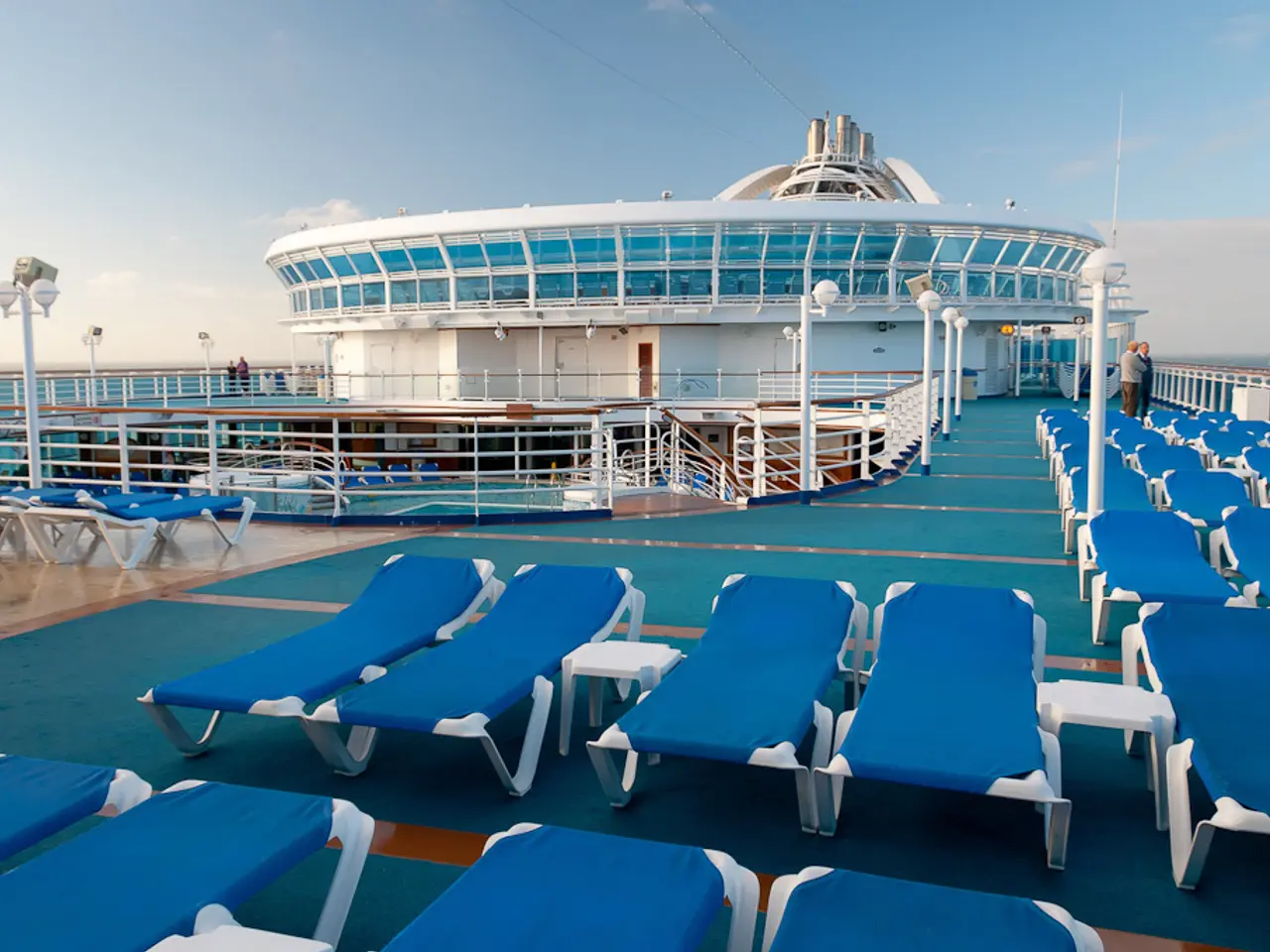Relaxation pursuits on overcrowded beaches worldwide: A guide to enjoying serenity amidst the bustle
In the sun-soaked Mediterranean, popular beaches are grappling with overcrowding issues that are affecting both the tourism experience and the environment. Local authorities in destinations such as Sardinia, Greece, and Spain are taking steps to address these challenges.
La Pelosa beach in Sardinia, Italy, infamous for its extreme congestion, has drawn significant complaints from tourists[1][2]. To manage this, local authorities have implemented measures such as limiting daily visitor numbers through permit systems and increasing surveillance to prevent environmental degradation caused by excessive human presence. They also emphasize raising awareness among tourists about the ecological sensitivity of the beach area.
Greece has taken a similar approach, implementing access controls and promoting off-peak visitation to reduce pressure on ecosystems. Environmental regulations protect dune systems and marine life, while infrastructure improvements aim to better distribute visitors across the region[2].
Spain, too, is addressing the issue by combining tourism management with activities that disperse crowds. Offering water sports and kayak tours encourages visitors to explore less crowded nearby coves. Spain also incorporates EU environmental certifications like the Blue Flag to maintain high standards of cleanliness and sustainability, guiding local policies toward preserving the coastal environment while supporting tourism[3].
Strategies employed across these destinations include visitor caps or reservation systems to limit numbers during peak periods, investment in alternative attractions and activities to disperse tourist concentration, environmental protection enforcement, and promotion of sustainable tourism practices through certification programs and public education.
However, overcrowding complaints remain common, indicating ongoing challenges in fully resolving the problem[1][2]. Overcrowding can turn a relaxing experience into a stressful one due to intense competition for beach space. Overcrowding also has negative impacts on nature, leading to litter, beach erosion, and resource depletion. Tourists often complain about the overburdened infrastructure, queues for toilets and showers at these beaches.
During peak season, visitors to overcrowded beaches may need to arrive at dawn to secure a spot. In response, some destinations have implemented strict measures such as banning alcohol consumption on certain beaches and fines for rule violations.
Interestingly, European beaches lead the world in terms of overcrowding, with Italian resorts taking the top two spots in this anti-ranking. Spanish Calà Comte (Ibiza), La Concha (San Sebastián), and Playa de Muro (Mallorca), as well as Cypriot Konnos Bay and Portuguese Praia da Falésia (Algarve) also made the list of the most crowded beaches in the world.
The overcrowding problem is further exacerbated by social media, which attracts more people to idyllic beaches, creating a vicious cycle. Experts at Cloudwards analysed 200 most visited beaches worldwide and compiled an anti-ranking based on complaints[4].
As these Mediterranean destinations continue to grapple with overcrowding, it is clear that a balanced approach is needed to preserve both the environment and the tourism industry. By implementing measures such as visitor limits, sustainable tourism practices, and alternative attractions, these destinations aim to ensure a high-quality visitor experience while protecting their precious coastal environments.
[1] Association of Tour Operators report [2] European Commission report [3] Blue Flag certification [4] Cloudwards anti-ranking report
Travelers visiting La Pelosa beach in Sardinia should be aware of the implemented measures such as permit systems, increased surveillance, and public education, aiming to manage overcrowding and protect the ecological sensitivity of the beach area.
Greece, Spain, and other Mediterranean destinations face ongoing challenges in resolving overcrowding issues, with strategies including visitor limits, sustainable tourism practices, and alternative attractions to preserve both the environment and support tourism.





